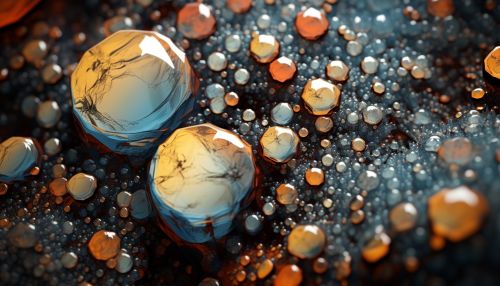Geomicrobiology
Introduction
Geomicrobiology is a scientific discipline that combines aspects of geology and microbiology. It is concerned with the role of microorganisms in geological and geochemical processes. The field is important in addressing issues such as bioremediation, microbial biogeochemistry, and the evolution of the biosphere.


History and Development
The field of Geomicrobiology has its roots in the early 20th century with the work of Sergei Winogradsky and Martinus Beijerinck, who pioneered the study of microorganisms in the environment. However, it wasn't until the 1960s and 1970s that the term "Geomicrobiology" was coined and the field began to be recognized as a distinct discipline.
Microbial Interactions with Minerals
Microorganisms can interact with minerals in a variety of ways, including biomineralization, bioweathering, and biosorption. These interactions can significantly affect the geochemistry of the environment.
Biomineralization
Biomineralization refers to the process by which microorganisms precipitate minerals. This can occur through a variety of mechanisms, including the alteration of the local environment to favor mineral precipitation, or the direct precipitation of minerals on the surface of the microorganism.
Bioweathering
Bioweathering is the process by which microorganisms contribute to the weathering of rocks and minerals. This can occur through a variety of mechanisms, including the production of organic acids that dissolve minerals, or the physical penetration of mineral surfaces by microorganisms.
Biosorption
Biosorption is the process by which microorganisms adsorb or accumulate minerals on their surfaces. This can occur through a variety of mechanisms, including the binding of minerals to cell surface components, or the active uptake of minerals by the microorganism.
Microbial Influence on Geochemical Cycles
Microorganisms play a critical role in many geochemical cycles, including the carbon cycle, nitrogen cycle, and sulfur cycle. Their activities can significantly affect the chemistry of the environment, and have been a major force in shaping the Earth's surface over geological time.
Carbon Cycle
In the carbon cycle, microorganisms play a key role in both the fixation of carbon dioxide through photosynthesis, and the release of carbon dioxide through respiration and decay.
Nitrogen Cycle
In the nitrogen cycle, microorganisms are responsible for the conversion of atmospheric nitrogen into forms that can be used by plants, as well as the return of nitrogen to the atmosphere through denitrification.
Sulfur Cycle
In the sulfur cycle, microorganisms play a key role in the oxidation and reduction of sulfur compounds, which can significantly affect the chemistry of the environment.
Geomicrobiology and Human Society
Geomicrobiology has important implications for human society, including applications in bioremediation, bioleaching, and the search for extraterrestrial life.
Bioremediation
Bioremediation is the use of microorganisms to clean up contaminated environments. This can involve the degradation of organic pollutants, or the immobilization of inorganic pollutants through biomineralization.
Bioleaching
Bioleaching is the use of microorganisms to extract valuable metals from ores. This can be a more environmentally friendly alternative to traditional mining methods.
Search for Extraterrestrial Life
The study of geomicrobiology can also inform the search for extraterrestrial life. By understanding the interactions between microorganisms and minerals on Earth, scientists can better predict where to look for signs of life on other planets.
